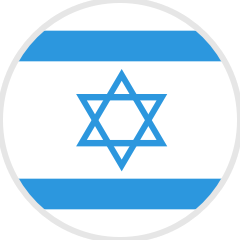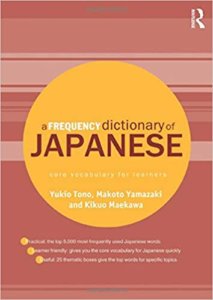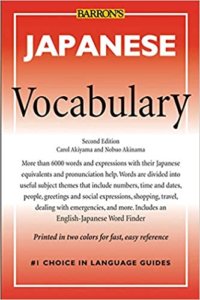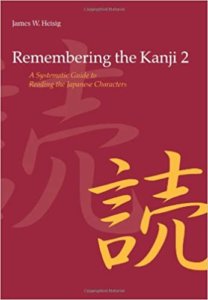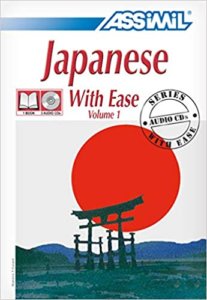The Best Way To Learn Japanese – 10 Effective Tips
Updated July 29, 2022
Are you looking for the best way to learn Japanese? Then you’re in the right place! Here are 10 simple and effective tips to learn this wonderful Asian language.
So, what’s the easiest way to learn Japanese?
At first glance, Japanese can seem intimidating for English native speakers. After all, it has three official alphabets, a context-dependent formality system, and an entirely different grammar system.
However, like all languages, it’s all about using the right methods to learn. The tools, strategies, and tips here will show you the best way to learn Japanese. You can jump straight to our 10 expert tips or read along and learn more about the language of the rising sun.
Before we go on, remember that you can learn Japanese or 12 other languages with the Fluent Forever app and our Live Coaching program. Lastly, don’t miss out on our Fastest Way To Learn a Language article for proven tips that work with any target language you may choose.
Why should you learn Japanese?
How long does it take to learn Japanese?
Best way to learn Japanese – 10 efficient tips
- Find your passion or purpose
- Be consistent, stay committed
- Learn how Japanese sounds
- Learn the Japanese alphabets
- Use the right tools to learn Japanese words
- Learn grammar intuitively
- Understand Keigo
- Immerse yourself in Japanese
- Practice with native speakers
- Work with a language tutor
- Pronunciation
- Base vocabulary
- Grammar
- Book-type resources
- Audiobook
- Other resources
- Assimil
- Dictionarist
- Japanese proficiency tests
The Fluent Forever method: the best way to learn Japanese

Learn Japanese and experience Tokyo like a local!
Photo by Aleksandar Pasaric from Pexels
Why should you learn Japanese?
Japanese is a highly relevant language with a rich cultural history. Additionally, some of its linguistic elements make it easier to learn than its reputation lets on. Here are some reasons why you should learn Japanese.
It’s widely spoken
Contrary to popular belief, Japanese is a widely spoken language. In fact, it makes the top 10 of most spoken languages globally, holding the 9th position and boasting 130 million native speakers.
Besides Japan, the island nation of Palau is the only other country where Japanese is the official language. However, large communities of native speakers live in Brazil and Hawaii. So, fret not, Japan isn’t the only place where you’ll be able to use this language!
Japan’s huge cultural impact
It’s impossible to deny Japan’s cultural impact on movies, cuisine, and art. From modern-day anime to sushi, ramen, and sake, it’s hard not to come across some Japanese in your daily life.
Learning Japanese will let you enjoy all of Japan’s wonderful gifts to the world in their original, unrestricted language.
There’s no tonal variation
Tonal languages rely heavily on inflection to differentiate words, as opposed to using distinct syllables and words, like most European languages. Many Asian languages, like Chinese, are very tonal, but Japanese is not one of them.
Mastering inflection and different tones can be rather difficult to learn. So you can rest easy knowing that you won’t have to go through this particular task with Japanese.
It’s easier than it seems
Besides its lack of tonal variation, Japanese has a couple of other unique elements that make it easier than you’d initially think.
For example, unlike Spanish, Portuguese, or Italian, Japanese nouns have no gender. Therefore, you won’t have to learn the proper article to use per noun.
Lastly, there are no plural words in Japanese. There isn’t a difference between calling out a herd of cows or a single grazing cow. It may sound difficult in terms of real-life comprehension, but it makes it easy to learn singular and plural nouns.
How long does it take to learn Japanese?
According to the Foreign Service Institute (FSI), the institution responsible for training US diplomats, it takes a native English speaker 88 weeks or 2,200 study hours to learn Japanese.
Additionally, the FSI ranks Japanese in category IV, which houses “super-hard languages – languages that are exceptionally difficult for native English speakers.”
So, is learning Japanese a walk in the park? Not entirely. Japanese is difficult for English speakers because of its three distinct alphabets, grammar structure, and the fact that it relies greatly on cultural context and understanding.
That being said, there are methods and tools that will make the process easier. And on that note, check out our 10 effective tips that will make your journey to Japanese fluency easier.

Impress your date by ordering at the sushi bar in fluent Japanese!
Photo by Valeria Boltneva from Pexels
Best way to learn Japanese – 10 efficient tips
1. Find your passion or purpose
Japanese is a tough language to learn, so make sure you have a good reason for starting. Figure out a solid, personal intention that will keep you motivated throughout the process.
Are you learning Japanese for work? Maybe you want to watch your favorite anime without distracting dubs or ridiculous subs. Whatever the reason, make sure it’s something important for you. Here are a few reasons why people start learning Japanese:
- Increasing opportunities to work or live in Japan
- Preparing to study abroad on a foreign exchange program at Tokyo University
- Connecting better with a significant other, family member, or friend who speaks Japanese natively
- Enjoying Japanese anime, shows, or movies in their original, glorious language
- Preparing for holidays in Tokyo or other Japanese prefectures
Whatever the reason, make sure to write it down and set it somewhere where you can constantly see it. Staying motivated is by far the best way to learn Japanese in the long run.
2. Be consistent, stay committed
The more study hours you invest, the faster you will learn Japanese. However, everyone’s language journey is different, and there is no magic amount of time.
So, instead of focusing on getting in as many hours as possible, focus on establishing a realistic schedule you can consistently meet. When it comes to learning a new language, quality study hours – even if it’s just 15 minutes a day – beats long but inconsistent study sessions.
We compiled a neat list of quality time-management tools for language learners so you can make the most of your study sessions.
3. Learn how Japanese sounds
The best way to learn Japanese from the start is to learn its sounds. Your ears are naturally wired to identify the sounds of your native language. Therefore, pronunciation and vocabulary will be extremely difficult to pick up until you get used to how Japanese sounds.
Try to listen to as much Japanese as you can from the beginning. NHK World has some easily accessible conversation lessons you can binge on in your free time. The News in Slow Japanese podcast is also a great source of quality pronunciation.
Some of you may be tempted to jump straight into anime. However, keep in mind that a lot of shows have exaggerated and unrealistic pronunciation. Tread with caution.
If you’re an absolute beginner, you can start studying pronunciation in Romaji – or the Romanized representation of Japanese characters – to understand how words sound. Romaji lets you translate words and phrases in Japanese into words you can read out loud.
For example, 私の名前はレナンです, or “My name is Renan,” becomes “Watashi no namae wa Renan desu” in Romaji. Even without an understanding of Japanese phonetics, you’ll be able to understand how the original sentence sounds.
It’s important to consider that Romaji is not one of the three official alphabets of Japanese. Though you won’t be able to rely on it in the long run, it’s a good place to start learning pronunciation.
You can find handy Romaji charts and tools here, here, and here.
Another, simpler way to get a grasp of how Japanese sounds is to retrain your ears with the Fluent Forever app. Through automated pronunciation and listening flashcard tests, the app will prepare your ears for Japanese. Additionally, it will teach you the Japanese alphabets throughout the process.
4. Learn the Japanese alphabets
One of the most intimidating aspects of Japanese for language learners is its three distinct alphabets. However, there’s no way around it: to become fluent in Japanese, you need to learn all of them – Hiragana, Katakana, and Kanji.
Here are a few tidbits of info and tips on each one.
Hiragana
Kanji and Hiragana – together known as Kana – make up most of modern Japanese, with the latter being the basic syllabic alphabet of the language. Thus, learning it is fundamental.
Hiragana has 46 characters, some of which are similar to each other. Knowing how to write Hiragana isn’t as important as knowing how to read it.
After getting acquainted with Romaji, most learners move to Hiragana. This official alphabet has the same syllabic content, so you’ll be able to keep practicing pronunciation.
Tofugu, which is a website that writes articles about Japan and Japanese linguistics and culture, made a thorough guide on how to learn Hiragana with mnemonic exercises that you can check out here.
As we mentioned earlier, an automated, more simple option is to use our app’s listening tests, which teach you how to read and pronounce Hiragana characters.
Katakana
Katakana is a different set of 46 different characters for the same sounds in Hiragana. While not as ubiquitous in Japanese writing as Hiragana, it’s important to learn this second alphabet for a few reasons.
First, the borrowed words in Japanese are written in Katakana. Second, its characters are necessary to understand Kanji readings. Lastly, some Kanji radicals, or the main components of a Kanji character, have the same name as the Katakana character they resemble.
Unlike Hiragana, you won’t be starting an alphabet from zero as some characters look like their Hiragana counterparts. Here you can find charts of both the Hiragana and Katakana alphabets.
Kanji
After getting your bearings with Hiragana and Katakana, most learners move on to Kanji. Kanji is an ancient written alphabet that boasts over 50,000 characters, according to the Dai Kan-Wa Jiten or Great Chinese-Japanese Dictionary.
However, few – if any – native speakers know every single Kanji. Most schools teach the most commonly used Kanji, which shrinks that 50,000-character count down to 2,136. That’s not so bad, right?
Memorizing one Kanji at a time, even if it’s just those 2,136 commonly used ones, is a monumental, Godzilla-sized task. A better use of your time is to use mnemonic exercises and flashcards to learn the 100 most common Kanji. For example, you can zero in on the 100 most frequently used Kanji.
We understand that learning Kanji can seem daunting. But knowing this alphabet is definitely the best way to learn Japanese vocabulary in the long term.
Learning frequently used Kanji will help you understand more of the written Japanese you come across. Essential Kanji is an excellent resource for character review.
You can also check out our resources section for more tools to learn the Japanese alphabets. And if you want to learn more about these types of alphabets and how to approach them, you can check out Gabe’s article on the subject.
5. Use the right tools to learn Japanese words
The best way to learn Japanese vocabulary is not using rote repetition and direct translations to learn every single word you come across. You’re better off using flashcards with images and focusing on the most frequently used vocabulary.
Flashcards that use images, drawings, or pictures allow you to pick up new words faster and retain them for longer periods. And incorporating a spaced repetition system (SRS) to review the vocabulary helps you learn effectively by focusing on the words you have trouble with.
While you can create your own flashcards using pen and paper, you can simplify the process with the Fluent Forever app. We automate the process of creating flashcards with images using the 625 most common words in Japanese.
Using our patented SRS algorithm, the app will create personalized review sessions based on your past performance. In short, you will learn key Japanese vocabulary in the most efficient and fastest way possible.
6. Learn grammar intuitively
The best way to learn Japanese grammar is to understand that it follows many repeating patterns. The idea, then, is to learn these patterns bit by bit and with the most effective methods available.
Now, there are a lot of patterns to learn. That said, there are a lot of elements in Japanese that you won’t have to worry about.
For example, unlike in some European languages, Japanese adjectives and nouns don’t change based on gender or usage. Additionally, adjective and verb conjugations aren’t based on the subject. Instead, they’re modified according to the tense and whether the sentence is affirmative or negative.
So, what’s the easiest way to learn Japanese grammar? The best use of our time is to learn the language’s grammatical patterns with the words and phrases you already know. Here, you should also rely on the same effective tool you’re familiar with: flashcards.
With the Fluent Forever app, you can learn Japanese grammar intuitively using sentence flashcards made with words you’re already familiar with. Plus, you’ll be able to choose which sentences and phrases you’re interested in learning. Download the app here.
7. Understand Keigo
We mentioned at the start that Japanese grammar is significantly contextual. It’s actually linked to an honorifics system called Keigo.
Basically, Keigo marks the level of intimacy between two people, which determines how each person addresses the other. This goes beyond adding or changing a pronoun, as in some European languages. Instead, sentences will follow distinct politeness forms.
For example, the ます (masu) form is used for acquaintances, strangers, or someone older than you. Additionally, this form is often used in the workplace.
While you’re learning Japanese, you will find different variations of formal, casual, and polite language. Generally, there are three styles of formality you should keep in mind:
- Honorifics style
- Humble style
- Polite style
Usually, polite is the initial verb form in basic Japanese textbooks and lessons. The humble and honorifics styles have their own unique verb endings and are seldom addressed in advanced books and courses.
Understanding this system is a must if you’re planning to move to Japan. The best thing you can do is consume Japanese media and pick up on the forms.
If you’re taking a language course or practicing with native speakers, don’t be afraid to ask your teacher or your exchange partner about Keigo (more on that below). After all, understanding the cultural elements that influence Japanese is part of learning the language.
In the meantime, here’s a basic introduction to Keigo that goes into more detail.
8. Immerse yourself in Japanese
With the basics down, the best way to learn Japanese for good is to immerse yourself in the language. Immersion refers to surrounding yourself with as much Japanese as possible through music, movies, literature, or even by living in Japan for a while!
Besides strengthening the vocabulary, pronunciation, and grammar you already know, language immersion will help you understand Japanese culture better.
Realistically, not everyone can drop everything and spend a year in Tokyo. Still, there are ways to surround yourself with Japanese in your daily life. Here are some ideas you could explore to help you mimic full immersion:
- Follow Japan’s news through podcasts or news sites
- Watch Japanese shows and movies online
- Change your phone’s language settings to Japanese
- Look up Japanese communities where you live and find someone to practice with
9. Practice with native speakers
Native speakers are an invaluable asset for Japanese enthusiasts. They have native-level pronunciation, can provide immediate and accurate feedback, and represent an excellent source of new vocabulary.
Finding a language exchange partner is easier than you think – you’d be surprised by how many native speakers in your community are looking to improve another language in exchange for their Japanese. It’s even easier to find a partner online.
Social media is a fantastic place to find communities of language learners looking for speaking exchange partners. Facebook in particular is teeming with online groups of people constantly looking for someone to practice with.
Even more straightforward are websites like MeetUp and MyLanguageExchange. Check them out!
10. Work with a language tutor
Similar to the last point, working with a Japanese tutor is a fantastic method to supercharge your journey to fluency. Besides being native speakers, most language tutors are certified in language teaching, too. So, along with getting all the perks of an exchange partner, a Japanese tutor will be prepared to teach you proper learning tools, exercises, and strategies.
Fluent Forever’s Live Coaching program pairs you with your very own native-speaking Japanese tutor. Our tutors are referred to as language coaches because they play the extra role of keeping you motivated to learn and accountable for your progress.
Additionally, our coaches are trained in our proven language teaching method and will create personalized lessons based on your interests, goals, and hobbies. You can sign up for our Live Coaching program and learn more about how it works in our guide to finding the best language tutor for you.
Japanese learning resources
Access to quality learning materials is a great way to supplement your Japanese. Below we’ve compiled a list of tools and resources for pronunciation, vocabulary, grammar, and other elements of the language.
Pronunciation
Wikipedia’s Japanese Phonology page, Wikipedia’s Japanese Pronunciation Guide, and About.com’s guide with recordings are great resources for accurate pronunciation. Additionally, Japanese for Work, My Kikitori, and Irodori are all fantastic sources of native-level pronunciation, listening exercises, and grammar and alphabet tests.
There are also some useful Anki flashcards for Japanese to improve your pronunciation, such as the Japanese Hiragana Alphabet, Japanese Katakana Alphabet, Japanese IPA Pronunciation, and other useful goodies.
Base vocabulary
Eventually, you’re going to need a way to type in Japanese on your computer. Here is a basic guide on how to use Japanese on your Mac and PC.
We also have a base vocabulary list of words to start you off! We find it easiest to translate those words using the short dictionaries at the end of a Lonely Planet Phrasebook; they’re cheap, short, and they give you good, standard translations for your words (just ignore the ridiculous pronunciation guides).
Later, when you’re ready for sentences, you can go back to your phrasebook and grab some. After that, try some of these resources:
The Routledge Frequency dictionary series is excellent, with example uses and everything. Get this at the beginning to direct your vocabulary work.
Barron’s vocabulary books are a wonderful set of books containing core vocab for just about any field/topic you can think of. They’re great for adding to your vocabulary bank once you get your first 1,000 or 2,000 words from a frequency list.
Alphabets
Out of the three Japanese alphabets, Hiragana and Katakana are more or less traditional phonetic alphabets (letters correspond to sounds [syllables, actually]), while Kanji is meaning-based (letters correspond to words) and stems from Traditional Chinese.
Learning Kanji is a skill that’s somewhat separate from the rest of Japanese (you can speak fluent Japanese and still be illiterate in Kanji). There are a series of pretty well-renowned books designed exclusively to help you memorize these three alphabets.
Remembering the Kanji (Volumes 1 & 2) and Remembering the Kana (The first two alphabets) by James W. Heisig break the characters down into their components and provide mnemonics for remembering them. The Kanji books are on the top, the Kana book on the bottom:
You can also access Japanese vocabulary Anki decks to boost up your Japanese vocab, like decks for the Japanese alphabets, including Japanese Hiragana Flashcards, Japanese Katakana Flashcards, Japanese Top Vocab Words, and many more.
Remember that the Fluent Forever app has ready-to-use listening tests and vocabulary flashcards to teach you all three alphabets while you learn pronunciation and new words. So you can skip installing Anki and setting up the decks to jump straight into learning!
Grammar
Genki I and II are standard but highly popular textbooks for the Japanese language. They are straightforward and affordable, so they’re a great starting point for beginners.
Tae Kim’s Grammar Guide, on the other hand, is more technical and advanced. However, it’s comprehensive and serves as a great reference when writing in Japanese.
Book-type resources
You can read anything that you enjoy. We’re big fans of the Harry Potter series in translation, especially if you can find an audiobook version to listen to at the same time as reading.
Audiobook
If you’re looking for Japanese audiobooks, you may find some possibilities over here.
Other resources
This site has one-minute news segments for children with audio, video, and text based on real stories. Lastly, Tae Kim has a pretty extensive guide to learning Japanese.
Assimil
Assimil doesn’t quite fit into any of the categories above, and we think it works best as a sort of supplemental source of Japanese input. Here’s the beginner Japanese version with CDs. The Japanese edition uses both Japanese characters and Romaji. Just ignore the Romaji.
Dictionarist
Dictionarist provides translations, example sentences, conjugations, and synonyms for a number of languages, including Japanese.
Japanese proficiency tests
If you’d like to get certified in Japanese, here you can find information about taking the Japanese-Language Proficiency Test (JLPT).
The Fluent Forever method: the best way to learn Japanese
One way to master Japanese to fluency is to download the Fluent Forever app and join a Live Coaching program. In doing so, you will grasp the basics of Japanese following our tried-and-tested 4-Step Method:
Step 1 – The app retrains your ears to understand and identify Japanese sounds with pronunciation tests. At the same time, you learn how the Japanese alphabet sounds!
Step 2 – You pick up essential Japanese vocabulary with the awesome power of personalized flashcards and our spaced repetition system (SRS) algorithm. The app automates the process of creating custom flashcards with images, pictures, or drawings.
Step 3 – After learning some basic Japanese vocabulary, you pick up grammar by creating sentences with words you already know. Also, you can choose which sentences to practice with and which ones to skip!
Step 4 – Wrapping everything up, our language coaches will get you speaking in no time. These 100% native speakers trained in our learning method will create sessions based on your schedule, interests, and goals.
So, what are you waiting for? Download the Fluent Forever app and join the Live Coaching program to get to fluency fast.
Disclaimer: as an Amazon Associate, Fluent Forever earns from qualifying purchases.
[shareaholic app="share_buttons" id="28313910"]













